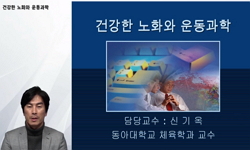자살에 대한 태도는 시대와 문화에 따라 변화를 거듭하여 왔다. 고대 그리스인들은 중립적인 태도를 고수하고 로마인들은 찬미하며 기독교 초기에는 열광했다. 그 열광은 중세의 기독교에...
http://chineseinput.net/에서 pinyin(병음)방식으로 중국어를 변환할 수 있습니다.
변환된 중국어를 복사하여 사용하시면 됩니다.
- 中文 을 입력하시려면 zhongwen을 입력하시고 space를누르시면됩니다.
- 北京 을 입력하시려면 beijing을 입력하시고 space를 누르시면 됩니다.

삶을 위한 죽음의 연습과 자발적 죽음 = Rehearsal for Death(meletē thanatou) for the Completion of Life and Voluntary Death
한글로보기https://www.riss.kr/link?id=A100142751
- 저자
- 발행기관
- 학술지명
- 권호사항
-
발행연도
2014
-
작성언어
Korean
-
주제어
자유죽음 ; 노화 ; 자살 ; 죽음의 연습 ; 소크라테스의 죽음 ; Freitod ; aging ; suicide ; melet? thanatou ; rehearsal for death ; death of Socrates
-
KDC
100
-
등재정보
KCI등재
-
자료형태
학술저널
-
수록면
175-206(32쪽)
- 제공처
-
0
상세조회 -
0
다운로드
부가정보
국문 초록 (Abstract)
본 논문은 자발적 죽음을 사회적 병리현상으로서 ‘자기 살해’와 인간 자유의 행사로서 ‘자유죽음’의 두 측면으로 다룬다. 그리고 자유죽음의 관점에서 삶의 완성을 위해 죽음을 미리 숙고하기, 즉 ‘죽음의 연습’을 논한다. 논문의 첫 단계에서 생명연장찬성론과 생명연장반대론의 논쟁점을 살펴봄으로써, 생명연장찬성론이 설득력을 지닐 수 있다면 그 내용은 무엇인지, 또한 그럼에도 불구하고 이 설득력에 맞서서 생명연장 반대론을 어떻게 주장할 수 있는지 탐색한다. 그 다음에 자살의 역사를 조명한다. 자살의 대한 판단의 역사적 변천을 통해 자살에 대한 부정적 평가가 절대적이 아니라 상대적임을 보인다. 이와 함께 개념적 차원에서 자살의 정의를 둘러싼 문제를 다루며, 자살의 개념적 확장을 제안한다. 마지막으로 죽음의 연습의 의미를 다시금 되새기며, 인간적인 사건으로서 자유죽음을 규명한다.
자살에 대한 태도는 시대와 문화에 따라 변화를 거듭하여 왔다. 고대 그리스인들은 중립적인 태도를 고수하고 로마인들은 찬미하며 기독교 초기에는 열광했다. 그 열광은 중세의 기독교에서 죄악시와 혐오감으로 변질되고 르네상스를 지나 근대에 이르기까지 정신이상과 도덕적 타락으로 배척했다. 18세기 들어서야 자살을 더 이상 범죄시 하지 않고, 이후 사회과학의 탐구대상으로 인식되기 시작했다.
본 논문은 자발적 죽음을 사회적 병리현상으로서 ‘자기 살해’와 인간 자유의 행사로서 ‘자유죽음’의 두 측면으로 다룬다. 그리고 자유죽음의 관점에서 삶의 완성을 위해 죽음을 미리 숙고하기, 즉 ‘죽음의 연습’을 논한다. 논문의 첫 단계에서 생명연장찬성론과 생명연장반대론의 논쟁점을 살펴봄으로써, 생명연장찬성론이 설득력을 지닐 수 있다면 그 내용은 무엇인지, 또한 그럼에도 불구하고 이 설득력에 맞서서 생명연장 반대론을 어떻게 주장할 수 있는지 탐색한다. 그 다음에 자살의 역사를 조명한다. 자살의 대한 판단의 역사적 변천을 통해 자살에 대한 부정적 평가가 절대적이 아니라 상대적임을 보인다. 이와 함께 개념적 차원에서 자살의 정의를 둘러싼 문제를 다루며, 자살의 개념적 확장을 제안한다. 마지막으로 죽음의 연습의 의미를 다시금 되새기며, 인간적인 사건으로서 자유죽음을 규명한다.
다국어 초록 (Multilingual Abstract)
This article concerns two aspects of voluntary death, namely suicide as an phenomenon of social pathology, and as ‘Freitod’, an act of Freedom of human beings. From the aspect of ‘Freitod’, the article considers the rehearsal for death (meletē thanatou) related to the completion of life. The first step for this maintenance examines some controversial issues between pro and contra side over the artificial prolongation of human life, and thereby discusses, which arguments make the pro side more persuasive, and how the contra side can argue against those. And then taking a look at the history of suicide, I try to show that the negative attitude toward suicide ist not absolute, but relative. I deal with the issues regarding the definition of suicide from the conceptual point of view, and further suggest an conceptual extension of suicide. Finally, reconsidering the meaning of rehearsal for death(meletē thanatou), I try to establish ‘Freitod’ as a human issue.
Attitudes toward suicide have been changing with times and cultures. The ancient Greeks took a neutral attitude toward suicide; the ancient Romans praised it, and even the First Christians became enthusiastic about it. But in the medieval Christianity...
Attitudes toward suicide have been changing with times and cultures. The ancient Greeks took a neutral attitude toward suicide; the ancient Romans praised it, and even the First Christians became enthusiastic about it. But in the medieval Christianity this enthusiasm altered to a vice and abhorrence, so that from the Renaissance to the early modern period, suicide has been excluded as an insanity and a moral corruption. It was not until the 18th century that suicide became not a crime. Afterwards suicide began to be realized as an object of social scientific research.
This article concerns two aspects of voluntary death, namely suicide as an phenomenon of social pathology, and as ‘Freitod’, an act of Freedom of human beings. From the aspect of ‘Freitod’, the article considers the rehearsal for death (meletē thanatou) related to the completion of life. The first step for this maintenance examines some controversial issues between pro and contra side over the artificial prolongation of human life, and thereby discusses, which arguments make the pro side more persuasive, and how the contra side can argue against those. And then taking a look at the history of suicide, I try to show that the negative attitude toward suicide ist not absolute, but relative. I deal with the issues regarding the definition of suicide from the conceptual point of view, and further suggest an conceptual extension of suicide. Finally, reconsidering the meaning of rehearsal for death(meletē thanatou), I try to establish ‘Freitod’ as a human issue.
목차 (Table of Contents)
- 논문개요
- 1. 들어가는 말
- 2. 수명연장의 꿈과 지혜를 사랑하는 자의 죽음
- 3. 생명연장찬성론 대 생명연장반대론
- 4. 자살의 두 얼굴: 찬양과 죄악시
- 논문개요
- 1. 들어가는 말
- 2. 수명연장의 꿈과 지혜를 사랑하는 자의 죽음
- 3. 생명연장찬성론 대 생명연장반대론
- 4. 자살의 두 얼굴: 찬양과 죄악시
- 5. 자살의 개념적 정의를 둘러싼 문제
- 6. 나가는 말
- 참고문헌
- Abstract
동일학술지(권/호) 다른 논문
-
- 사회와철학연구회
- 박구용(Park, Goo Yong)
- 2014
- KCI등재
-
- 사회와철학연구회
- 도승연(Doh, Seung-Youn)
- 2014
- KCI등재
-
- 사회와철학연구회
- 김광식(Kim, Kwangsik)
- 2014
- KCI등재
-
- 사회와철학연구회
- 문성훈(Moon, Sung-Hoon)
- 2014
- KCI등재




 KCI
KCI DBpia
DBpia






